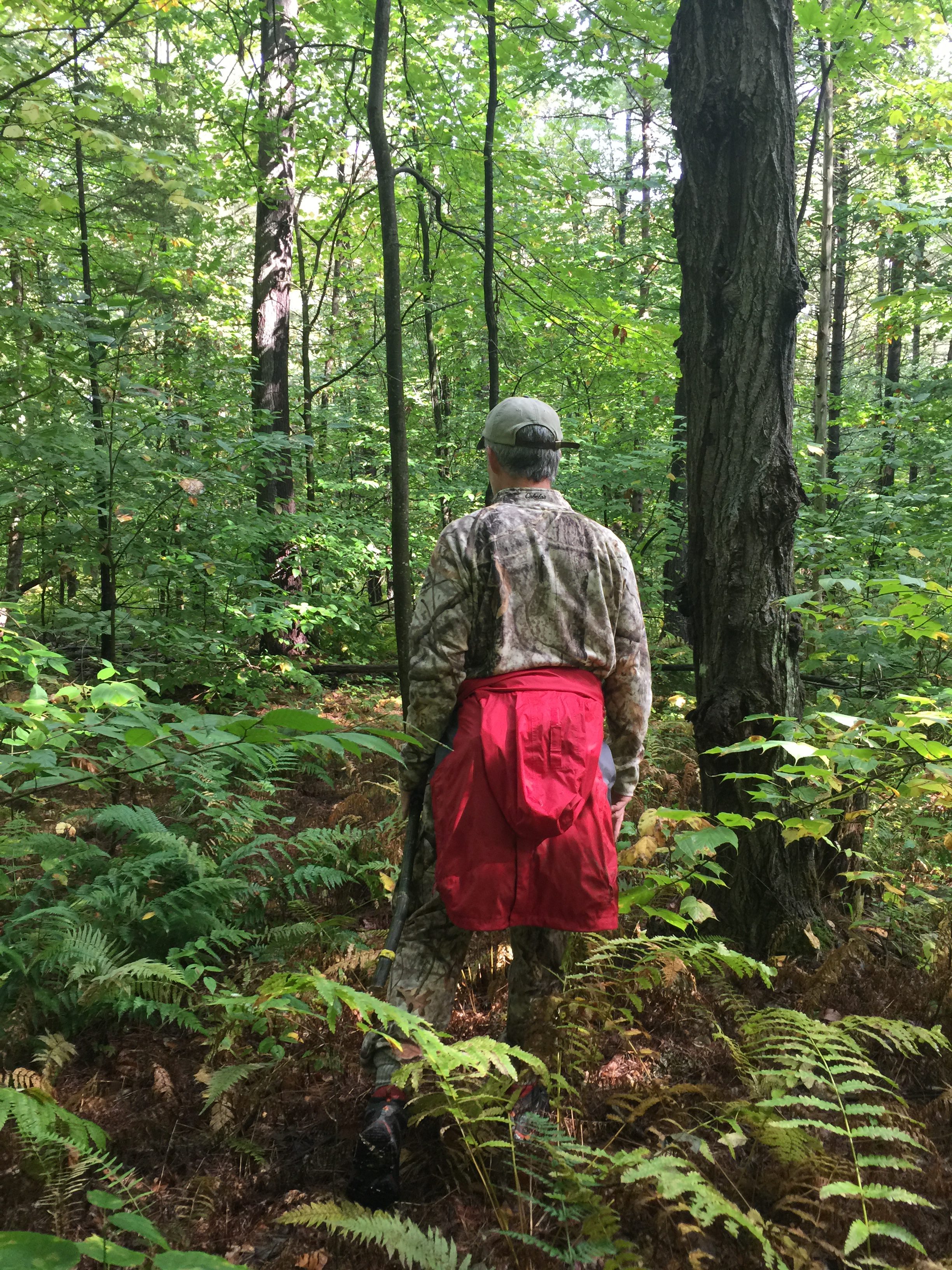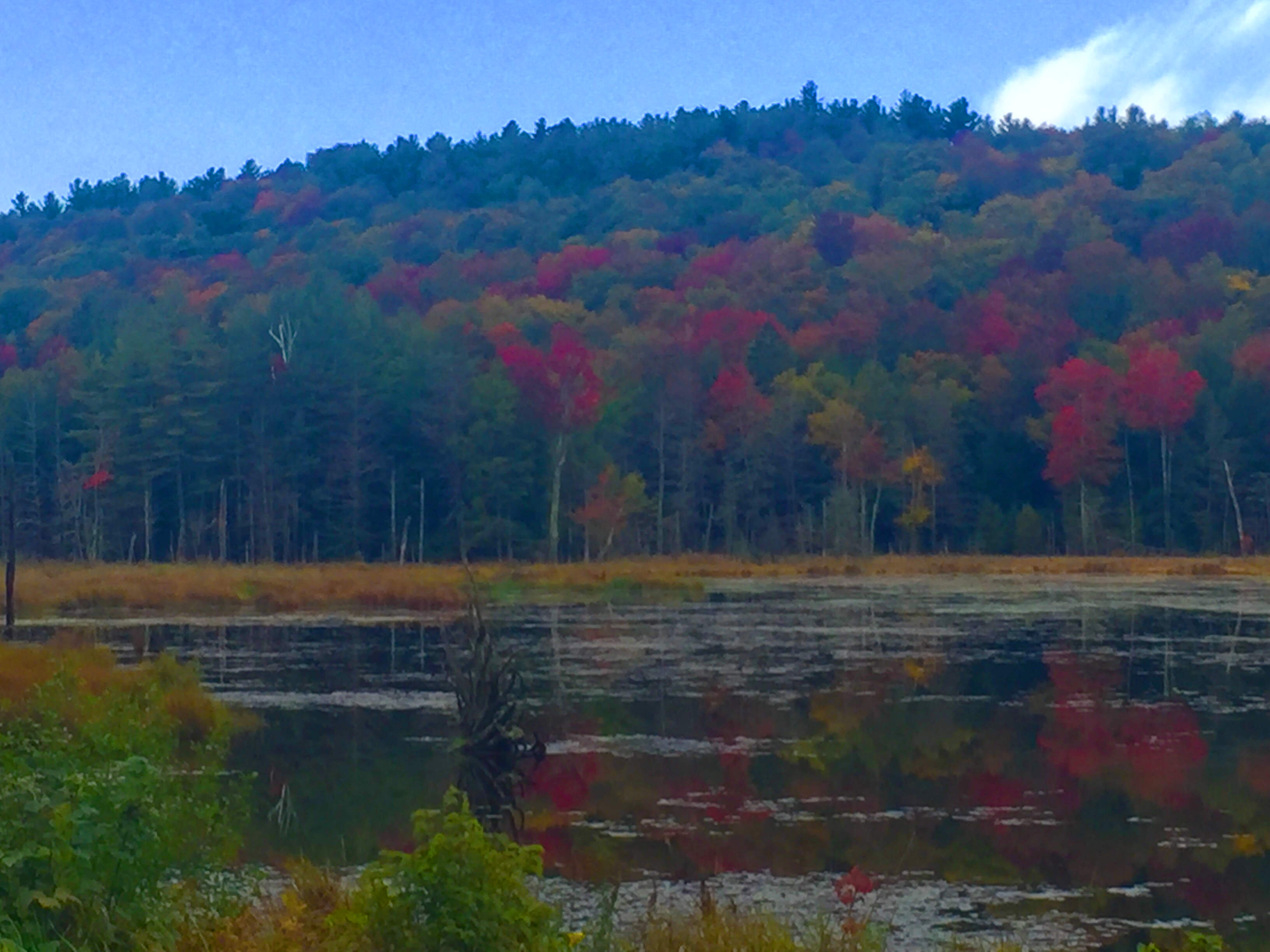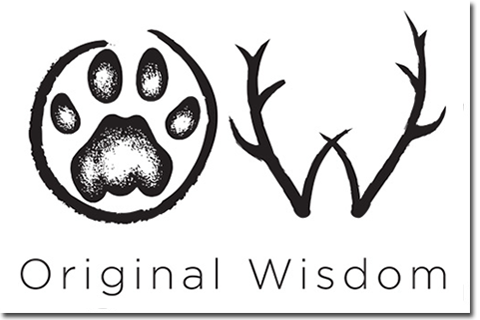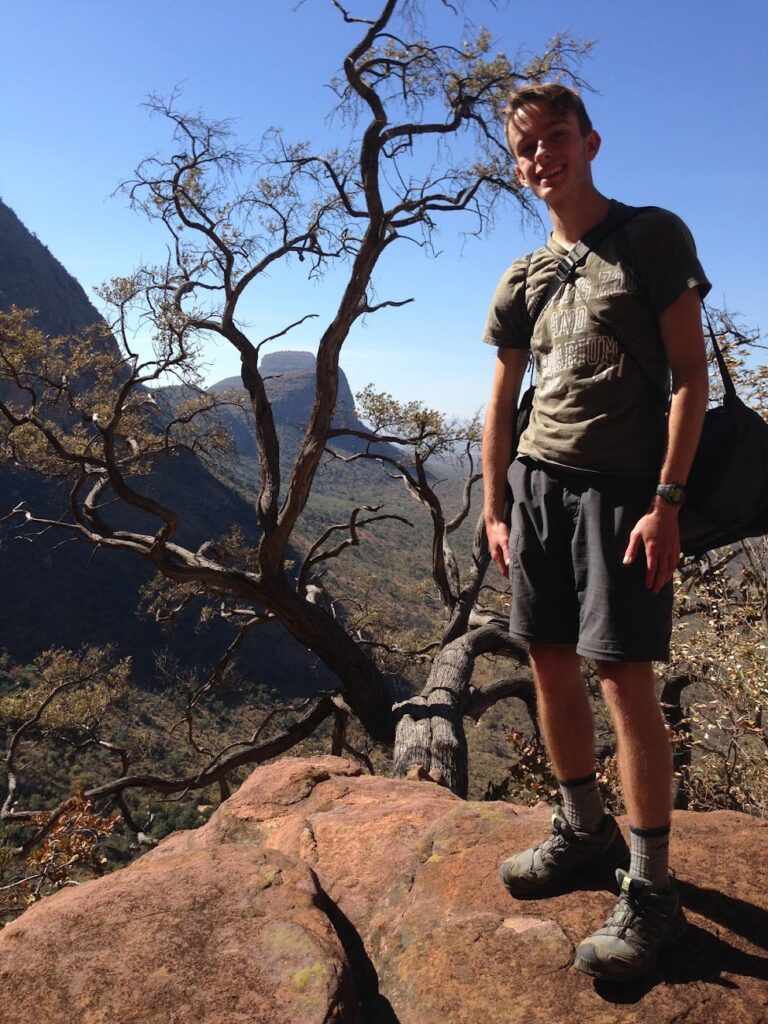
The colder, wetter weather of the fall is causing the leaves to turn colours in the northern USA. Soon the leaves will fall to the ground and cover the tracks that we follow.
I was recently in New England on a brief stopover home to visit family, and had a singular opportunity to get into the woods on some deer trails with Nate Harvey, who is also a Senior Tracker and Evaluator for CyberTracker. Nate is one of my mentors, and runs a trailing school in southern Vermont, TrackersTrail.com.
We spoke about how difficult the trailing conditions have been for the past few months, with the ground so hard from very little rain. Even the rain we got earlier in the week didn’t do much to help differentiate fresh tracks from old ones. Why is that? I’d think that rain would soften the ground and make those fresh tracks “pop” in comparison to the old ones, but it doesn’t seem so. We spent the day trailing what we thought was the same group of small deer, and it was a difficult trail to stay on. We switched back and forth on the lead, dropping the trail as individuals and then picking it back up again. In some spots there were no tracks for a long way, so we had to speculate on where they went and just move forward, hoping to find evidence to support our hypothesis. Usually we did.


Nate follows deer trails in what looks like it should be easy substrate… but it wasn’t!
But those older tracks…. wow, how they wove and tangled with the new ones, and it was very difficult to be sure that we were on the right trail. It was a great puzzle to spend the day with in the north woods. Deer are wonderful teachers and most of my trailing experience in the USA has been with eastern white-tail deer. They are usually in small groups and are super alert so you hardly ever are able to surprise them – but it’s fun to try and an excellent exercise in approaching animals without them seeing you. More that that, though, they do wander through the landscape, and they go places you wouldn’t expect. Once, I trailed a deer up a cliff, actually using my fingertips to feel the tracks and grab into them to pull myself up the trail. My feeling is, that if you spend time trailing deer, bigger animals become easier to follow. I didn’t have moose or bear to follow where I lived in Connecticut, so I spent most of my days following deer. When I finally got out west to trail bear before and during the Specialist Trailing Evaluation, I won’t say it was easy (bears are a wholly different story and possibly the most difficult animal I have ever trailed, and the most fun!) but my experience trailing those obscure little hooves surely did help.
Now I am heading back to Africa, where we have some interesting tracking courses scheduled (one with some scientists, trackers, and invertebrate specialists, since Lee is writing a book on Southern African Invertebrate Tracks and Sign, NatureGuideTraining.com), and we are heading into summer in the Southern Hemisphere, where it should be hot and rainy – but we are in the midst of a drought. The substrate is different there, but I wonder how the drought is affecting the way the animal tracks display. In the last few leopard trails we’ve taken, they have gotten very difficult, very quickly, even in sandy areas. I wonder if the same principles that were confusing us on the track ageing here, apply there, or universally? The ground is just so hard that even a soaking rain doesn’t make it behave as expected. Ageing tracks is one of my nemesis, it’s hard to do. I’m usually pretty good at putting them into broad categories: old, fresh, etc… but the nuances escape me and I envy people who can determine a lot more. It’s something I intend to spend a lot more time studying and getting better at – but this new information confounds things!
Master Tracker Adriaan Louw put out the “Ten Rules of Trailing” years back, here they are:
Stay on the Trail.
Keep your head up.
Follow the most obvious route.
Don’t get distracted.
Don’t be afraid to make mistakes.
Don’t lose momentum.
Use your senses.
Become part of the landscape.
Know the animal.
Don’t give up.
I’d add an 11th, or golden rule that all of the above depend on… Know the age of the tracks.
Keep Going!
-Kersey Lawrence, OriginalWisdom.com


Soon the beautiful landscape will be blanketed in ice and snow. We will be back in January for some snow tracking!

